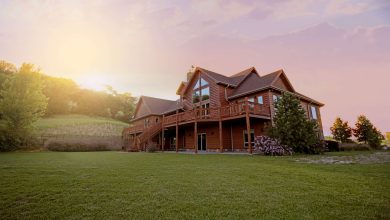The Psychology of Speed: Why QSR Real Estate Is Evolving with Human Behavior

In a world where two-day delivery feels too slow and five-minute waits test our patience, it’s no surprise that the Quick Service Restaurant (QSR) industry is pushing boundaries—not just in what it serves, but where and how it serves it.
But there’s a fascinating layer behind this transformation: human behavior. From impulse-driven dining decisions to mobile-first ordering habits, QSR businesses are increasingly shaped by the psychology of speed, familiarity, and access. And so is the QSR real estate that makes those experiences possible.
From Cravings to Curbside: How Behavior Shapes Built Space
You don’t plan to crave a burger. You crave it on the spot. The real estate that supports QSR must be designed to capture and satisfy that moment within minutes.
That means:
- Visibility from key roads
- Easy ingress and egress
- Minimal friction between decision and delivery
- Proximity to traffic generators like offices, medical centers, or shopping zones
The more intuitive the physical journey, the more likely the sale. That’s why today’s QSR real estate is a reflection not just of demand—but of how we make choices in real time.
How the Digital Age Is Rewriting Physical Space
Digital orders. Delivery apps. Geofencing. Loyalty programs. These aren’t just tech features—they’re shapers of space.
Modern QSR locations now have to accommodate:
- Third-party delivery driver parking
- App-based order lanes
- Curbside pickup zones
- Drive-thru lines with dynamic screens and mobile check-in points
It’s no longer about serving a line inside—it’s about serving multiple streams of traffic, each requiring its own design logic. This multi-channel layout calls for QSR sites that are lean, efficient, and intelligently engineered.
That’s where experienced developers like Lawrence Todd Maxwell come in—designing not just for physical foot traffic, but for digital footprints too.
The Shift from Food Stop to Lifestyle Circuit
Today’s QSRs aren’t just competing with each other—they’re competing with coffee chains, grocery delivery apps, and home-cooked meals. So the real estate they occupy must do more than offer food—it must offer rhythm.
Great QSR sites are:
- Close enough to be part of the daily commute
- Intuitive enough to become a habit
- Efficient enough to feel effortless
- Flexible enough to evolve with the customer’s life stages
This “lifestyle circuit” mentality means that QSRs now function like neighborhood utilities—reliable, repeatable, and essential.
QSR Real Estate as a Behavioral Mirror
In many ways, QSR real estate acts like a cultural barometer. Where people eat—and how easily they can access that food—reveals volumes about how we:
- Navigate our cities
- Manage our time
- Seek comfort or speed
- Make impulsive decisions on the go
The best QSR sites don’t just follow data—they anticipate behavior. They don’t just meet demand—they meet people where they are, mentally and geographically.
Final Thought: Real Estate That Thinks Like a Consumer
The future of QSR isn’t just about menus—it’s about moment design. Developers who understand this are shaping more than plots of land—they’re shaping the experience of modern life.
Through thoughtful site selection, behavioral insight, and infrastructure that blends seamlessly with both digital platforms and human instincts, the next generation of QSR real estate will be faster, smarter, and more responsive than ever




